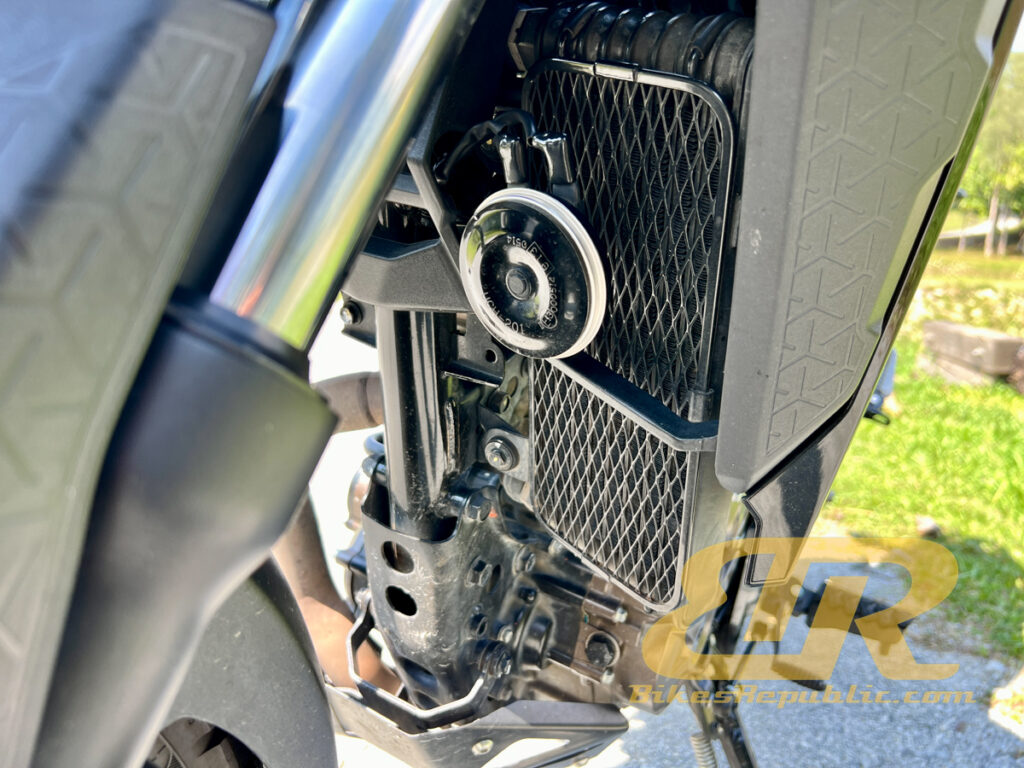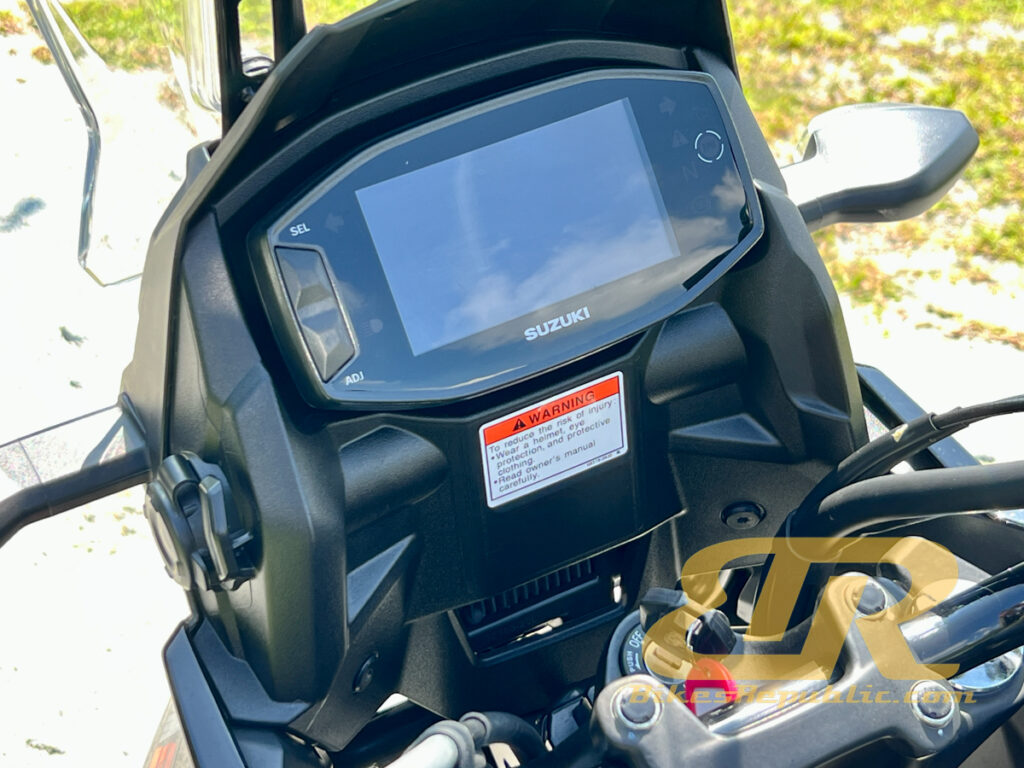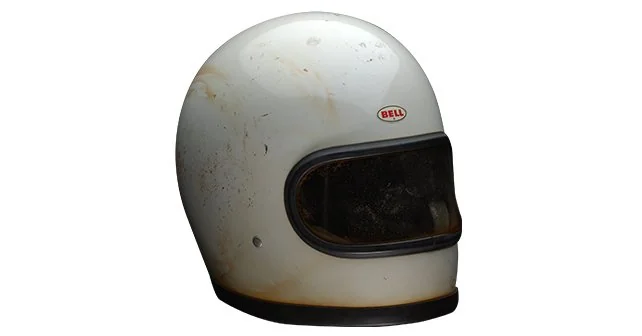So, the motorcycling world has been shifting towards dual-purpose/adventure and sport-touring motorcycles for many seasons now. Say ‘dual-purpose’ and people usually think about those 1000cc and above behemoths such as the GS, Africa Twin, Super Adventure, V-Strom 1050… But, there is a demand for lightweight adventure bikes, as well, hence the 250cc dual-purpose/adventure market is fought over teeth and nails by manufacturers. And this is where the 2024 Suzuki V-Strom 250SX fits in.

The smallest of the V-Strom family is not new, by the way, and it was in fact one of the very first 250cc adventure bikes, known as the DL250 since 2017. However, the updated bike, now wearing the ‘V-Strom’ family name has just arrived in Malaysia.
Features
As with its peers in this segment, it is a simple bike.
- The engine is a 248cc, single-cylinder, SOHC, oil-cooled unit which produces 26hp at 9,300 RPM and 22.2Nm at 7,300 RPM. Before we forget, the bike is a certified EEV – Energy Efficient Vehicle.

- That power is sent through a six-speed transmission. There is no assist and slipper clutch.
- The engine is housed in a tubular steel frame, to which the front telescopic forks and rear monoshock are also mounted.

- Brakes are discs front and rear, with ABS as standard.
- Steering angle is a relaxed 27º, seat height is 835mm, and kerb weight is 167kg.

- Lighting is LED all-around, the instrument panel consists of an LCD screen, and there is a USB charging port at the side of the instrument “tower.”
- Speaking of the tower, the windscreen occupies a high position and is unadjustable.

- There are several adventure bike features such as hand protectors and a small sump guard.
And that is all, folks.

Riding the 2024 Suzuki V-Strom 250SX
The seat heigh of 835mm is not low but it is not the highest among its rivals, either. Suzuki did a great job of slimming the area where the seat meets the tank, allowing the rider to place a foot on the ground easily. Anyway, just an advice from us, which we learned from Chris Birch, “The biggest mistake among new adventure bike riders is trying to place both feet on the ground at the same time. Putting one foot down is more secure.”

Having ridden other 250cc adventure bikes before, we kind of expected the engine’s torque to be further up the rev range. Instead, the Suzuki pulled away briskly when the clutch was released.
It turned out to be a good thing because it made short work of riding through heavy traffic. We took the bike off-road and that low-down torque made the bike easy to manage, too. All we needed to do was open the throttle slightly and modulate the clutch. Easy.

While it makes a “mere” 26hp, we found that it was more than sufficient while cruising at 120-130km/h on highways. If you are looking for high top speeds from this bike, you are missing the point.
Road handling is good, just like other Suzukis, but the bike turned in a little slower, before plopping on its side. We attributed that to the MRF tyres. These tyres offer some good grip on dry roads and light off-road trails, but they are super slippery in the wet. The first to go was the front as it tries to slide underneath. So, to overcome this, we pushed the bike down on wet roads and leaned to the inside when it was dry.

But the true revelation of the Suzuki V-Strom 250SX is the suspension. It was supple yet held its own when hitting bumps and potholes. In fact, we had to confirm it by purposely riding over bumpy roads and through potholes. We even jumped over speed bumps. Sorry, Suzuki Malaysia.
Mated to superbly padded seats and you have a bike that made riding around in KL an easy and comfortable affair. Riding it felt like a bigger bike but with lower weight and easier handling.

The icing on the cake was the fuel frugal engine. We averaged 31km/litre consistently despite riding the bike between 110-130km/h.
Build quality
The bike’s build quality was superb: Flush fitting panels, even paint, and there was no wayward cables and wires when you took down past the top triple clamp. Even the undersides of luggage rack was smooth to the touch.

Pricing
It is actually hard to believe that the 2024 Suzuki V-Strom 250SX is priced at only RM17,800, while all its rivals are above RM20,000. You get a lot of value given its quality, engine, suspension, comfort, and looks.

Conclusion
Truth is, if you want an user-friendly beginning adventure bike, or a lightweight adventure bike for the daily commute, this is it. Beginners can use the V-Strom 250SX to learn the intricacies of off-road riding, while veteran riders can look forward to a jump they can jump on and ride away.
In closing, it is a great buy. Just make ours in Champion Yellow No. 2.

Photo gallery




























































































































